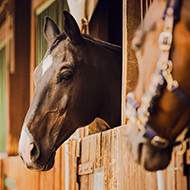Online practical skills portfolio to aid student veterinary nurses
The Central Skills Log (CSL) is an online work-based learning and communication tool developed by Central Qualifications (CQ). It provides a modern alternative to the green book of nursing yesteryear – a platform for recording, monitoring and quality assuring practical assessments in the Diploma in Veterinary Nursing (DipVN™).
Acting as an ePortfolio, the CSL has been designed to support student skills development and Centre delivery of the DipVN™.
On completion of practical tasks, students are able to upload pictorial and media evidence via any web-enabled device, as well as monitor their progress and record achievements.
Further, every practical task within the DIpVN™ is detailed on the CSL and accompanied by explanatory notes, providing guidance to the student, as well as standardisation across Centres.
The CSL also supports a team-based approach to teaching. Practical tutors, clinical coaches and lecturers, as well as internal and external verifiers, can access a student's record to collaboratively monitor progress and update records.
As a handy reference, and for those who wish to utilise both print and digital media in their studies, a notebook version of the CSL for the DipVN™ has been published and is available from CQ approved Centres for academic year 2013/14.
As well as guidance notes, the CSL Notebook contains a 2013-2016 calendar, useful conversion tables for weights, lengths, temperatures and volumes, and a list of abbreviations used in prescription writing.
Useful measurement charts are additionally available for quick reference, demonstrating heart rates, resting respiratory rates and rectal temperatures for domestic, equine and farm animals.



 Zoetis has launched a new survey to identify management techniques for Equine Herpes Virus (EHV).
Zoetis has launched a new survey to identify management techniques for Equine Herpes Virus (EHV).